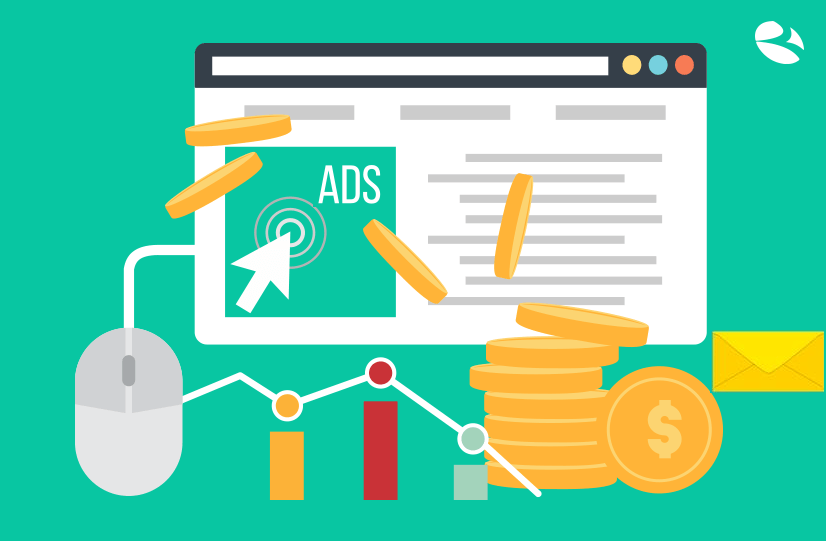Contents
- 1. PPC In eCommerce Is Ineffective Without Product Page Optimization!
- 2. Try branded & Non-Branded keyword segmentation.
- 3. Keyword Segmentation Is Vital When It Comes To PPC In eCommerce
- 4. Google Showcase Ads: For eCommerce And Digital marketing.
- 5. Do you have an offline store? Utilize Local Inventory ads!
- 6. Are you updating your product pages?
- 7. Invest in good shopping cart solutions.
- 8. Invest in Google shopping ads.
- 9. Focus On Unique Audience Targeting
- 10. Effective PPC ads on Instagram and Facebook
- Conclusion
Ever since the internet came into existence, it has become an integral part of our lives. It has transformed the consumer's shopping experience. eCommerce has grown tremendously, such that it has changed the way of marketing. How has eCommerce transformed marketing? Many businesses have now shifted their focus from offline retail to online retail; they have quickly adopted the eCommerce business model. Hence, we see a dramatic shift in the methods of retail marketing.
Today, the internet has shaped marketing and the strategies through which online sellers target their customers. Online shopping is one of the significant internet activities around the globe. As per Statista, in 2020, e-commerce sales grew up to $4.28 trillion! By 2022, we can expect it to reach a whopping $5.4 trillion market.
Alt IMG tag - Forecast for global eCommerce sales
Various search engines and marketplaces provide the convenience of running targeted PPC ads; these ads are known for quick exposure and drive instant results. PPC ads have become a crucial element in eCommerce and digital marketing. There are numerous benefits of PPC ads over Search Engine Optimization. A famous example of a PPC ads platform is "Google Ads."
The popularity of Google Ads among eCommerce websites has increased significantly; in fact, Google's Ad revenue in 2020 was around $146.92 billion. The internet giant generates a high amount of income via Google Ads Platform that helps marketers display ads, product listings, etc.
It is very critical for eCommerce stores to optimize PPC strategies that fetch them the best results. PPC in eCommerce, if implemented correctly, can allow an eCommerce website to gain more traffic, sales, and revenues. The increasing competition makes it essential to use advanced or latest strategies to stand out from your competitors.
The ever-increasing business competition in the eCommerce space has made it necessary for online businesses to use the latest PPC strategies. PPC in eCommerce is pretty standard; you might be struggling to make your PPC campaign a success. There are several reasons why your PPC strategies aren’t converting; however, multiple advanced PPC tactics can help marketers perform better in online sales and customer acquisition.

Source: Unsplash
1. PPC In eCommerce Is Ineffective Without Product Page Optimization!
One of the most common ways to align your product pages with the latest SEO trends is by optimizing them. Many PPC marketers spend ample time optimizing product pages; it includes optimizing product titles, keyword stuffing, etc. You must consider highly relevant keywords to your products and avoid those that can negatively impact your website. Make sure to add those keywords in your description.
All in all, you must recognize inconsistencies in your PPC strategies that can lead to wastage of your PPC spend. Your content team should produce unique, relevant, and engaging product descriptions. It is always fruitful to hire a professional SEO team or expert with the prerequisite knowledge of the latest PPC strategies for product page optimization.
2. Try branded & Non-Branded keyword segmentation.
Keyword-based text ads enable retailers to analyze the intent of their customers. Hence, it helps them to optimize ads accordingly. Although the shopping ads were developed on a product-based bidding model, Google's auction chooses products displayed for a particular search result. Due to this model, crucial elements like optimization and bid control aren't in the retailer's hands. Why? Because they can't bid separately on a customer throughout their buyer journey. As a solution, you can utilize keyword segmentation.
3. Keyword Segmentation Is Vital When It Comes To PPC In eCommerce
You can then use shopping settings and campaign priority to manage how much you want to bid. With campaign priorities, you can include the same product in many other campaigns. You can evaluate which campaign should take part in the auction for a specific product with a campaign priority that can be low, medium, or high.
4. Google Showcase Ads: For eCommerce And Digital marketing.
Showcase Shopping ads came in 2016. It is a better solution for online retailers, eCommerce, and advertisers; Google Showcase ads can be a dedicated digital storefront. For customers, it acts as a window-shopping feature. You can easily group multiple eCommerce products and showcase them using high-quality pictures. You can even group your major products with various smaller products to form a "me-too" product combination and provide customers with a significant discount offer.
The Google Showcase ads are often used to target non-brand queries that show up on mobile search results. On search engine result pages, the ad showcases brand-specific product images relevant to the search queries. Users can click on them to see the custom description that portrays the brand and ten other products. Showcase ads also deliver the maximum cost per engagement. Hence, marketers can set a high amount after which they'll be charged when a user expands the ad for ten seconds. Google Showcase ads are best for developing an upper-funnel tactic.
5. Do you have an offline store? Utilize Local Inventory ads!
As per Google, 80% of the purchasers will quickly visit a store if a retailer sells the exact item they want to buy. When we talk about online searchers, utilizing local inventory ads is best to meet buyer expectations. It is one of the most effective ways to drive visitors to the store, capture, and engage them by featuring products they can buy from nearby stores. These ads feature on mobile queries too! They usually have a local search intent (e.g., “Blazers near me”) and influence purchase decisions within a radius of a physical store.
The moment your potential customer clicks on the ad, they are redirected to the Google-hosted storefront page. You can customize your storefront page’s product description with images and links to your website. Ensure to add your contact number, hours of operation with a map that helps your customer with the directions to the store.
Your customers can also purchase the product directly from your website. If you have a physical store, then you must update your inventories and in-store availability. Once a marketer sets up a local inventory campaign, they can use Google Analytics to monitor these metrics to optimize your campaigns further.

Source: Unsplash
6. Are you updating your product pages?
As discussed in the first section, your product page should be updated at regular intervals. Imagine a user visiting a product page on a holiday or a weekend. If they find your page not updated, you might lose a chance of converting them into your customer. Hence, you must invest time in revamping your product pages with the perfect sales pitch. The first section discussed how keywords and content play a massive part in optimizing product pages.
However, pictures or images have a significant influence on product page optimization. You must ensure that you have clean, precise, and engaging photos of your products. If you can add a product video, that can help increase your sales by adding visual information to the product page. Adding a video of your product adds value to your webpage, which increases the chances of sales!
Apart from that, you must optimize the key benefits of your shopping website like free shipping, quick delivery, no contact delivery, cash on delivery, etc. You must also get reviews of your product under the review sections because having reviews on your PPC ads can increase the conversion rate of your pages.
7. Invest in good shopping cart solutions.
According to a study, in 2020, cart abandonment rates were severely high! Did you know that almost 88.05% of the online shopping carts go abandoned as they don't convert into an actual purchase? One of the key reasons behind a high cart abandonment rate is poor shopping cart software. A shopping cart is like one software on the website that allows the customer to purchase a product. Shopify, Woo-commerce, and big commerce are the most common shopping carts that are great for SEO and paid search. If there are any issues with your shopping cart, you can approach the support team for quick fixes or optimization.
8. Invest in Google shopping ads.
When you Google Search “Floral Shirts,” the results pop up under the “shopping tab” are Google Shopping Ads. If you are already running Google shopping ads, you must optimize them based on the results you fetch from your analysis. You can utilize eCommerce tracking setups to see your revenue generation or ROI on each product. In this way, you’ll be able to spot ads that aren’t doing well.
9. Focus On Unique Audience Targeting
Google and Bing offer great tools like demographics, retargeting, customer match, etc. Advertisers can also utilize features like custom messaging, bid scaling that can be used whenever they want to. Google can evaluate a category of people who are searching for a particular product. You can use these tactics to target a less obvious audience. As a jewelry brand, your competitors would be targeting the same chunk of the population. However, you can target a unique audience; you can target men trying to buy gifts for anniversaries, weddings, or birthdays. As a result, you’ll be able to target an audience in a low-competition zone.
10. Effective PPC ads on Instagram and Facebook
Social media advertising provides a wide range of channels through which marketers can run their PPC ads. If you can target users on Facebook and Instagram, you can find the right kind of sales. Facebook ad targeting offers some powerful features like:
- Marketers can see the recent buying behavior of Facebook users.
- Marketers can leverage Life Events Targeting.
- ?Marketers can nurture leads with Facebook Custom Audiences.
- Tap into lookalike audiences.
- Get Granular and layered targeting options.
Conclusion
How has eCommerce transformed marketing? We hope you got the answer! However, it is very important for eCommerce stores to optimize their PPC strategies if they want to get the best outcomes. Mastering your PPC strategies can help you accomplish your desired business goals. With above mentioned powerful PPC strategies, your eCommerce website can tap into high-purchase intent audiences. If you have been searching for proven PPC tactics to outshine your competitors and generate more leads, then you can consult Saffron Edge's Paid Marketing experts. We curate successful paid marketing solutions that can increase your eCommerce website's visibility and conversion.
The ultimate marketing toolkit
Related Blogs
We explore and publish the latest & most underrated content before it becomes a trend.
6 min read
Why Location-Based SEO Works Better for a Healthcare DTC Brand
By Vibhu Satpaul
Subscribe to Saffron Edge Newsletter!

The ultimate marketing toolkit










